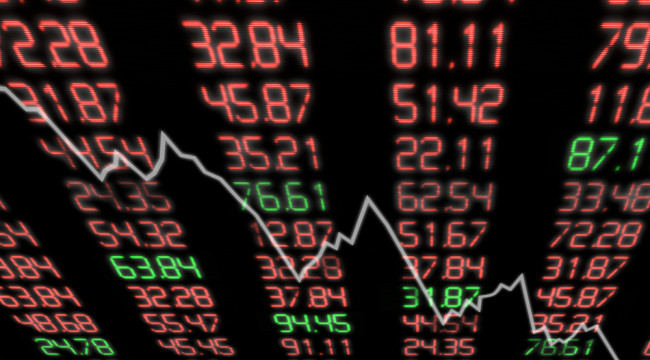The "Crash" Is As Rigged As Everything Else
Take your pick–here’s three good reasons to engineer a “crash” that benefits the few at the expense of the many.
There is an almost touching faith that markets are rigged when they loft higher, but unrigged when they crash. Who’s to say this crash isn’t rigged? A few things about this “crash” (11% decline from all time highs now qualifies as a “crash”) don’t pass the sniff test.
Exhibit 1: VIX volatility Index soars to “the world is ending” levels when the S&P 500 drops a relatively modest 11%. The VIX above 50 is historically associated with declines of 20% or more–double the current drop.
When the VIX spiked above 50 in 2008, the market ended up down 57%. Now that’s a crash.
Exhibit 2: The VIX soared and the market cratered at the end of options expiration week (OEX), maximizing pain for the majority of punters. Generally speaking, OEX weeks are up. The exceptions are out of the blue lightning bolts such as the collapse of a major investment bank.
Was a modest devaluation in China’s yuan really that unexpected, given the yuan’s peg to the U.S. dollar which has risen 20% in the past year? Sorry, that doesn’t pass the sniff test.
Exhibit 3: When the VIX spiked above 30 in October 2014, signaling panic, the Federal Reserve unleashed the Bullard Put, i.e. the Fed’s willingness to unleash stimulus in the form of QE 4. Markets reversed sharply and the VIX collapsed.
Now the VIX tops 50 and the Federal Reserve issues an absurd statement that it doesn’t respond to equity markets. Well then what was the Bullard Put in October, 2014? Mere coincidence? Sorry, that doesn’t pass the sniff test.
Why would “somebody” engineer a mini-crash and send volatility to “the world is ending” levels? There are a couple of possibilities.
- The Shock Doctrine.Naomi Klein’s landmark study of how manufactured crises are used to justify further consolidation of power, The Shock Doctrine: The Rise of Disaster Capitalism, provides a blueprint for how financial crises set the stage for policies that extend the power of central and private banks and various state-private sector players.
A soaring VIX and sudden crash certainly softens up the system for the next policy squeeze.
- A “crash” engineered to set up a buying opportunity for insiders.When easy gains get scarce, what better way to skim a quick 10% than engineer a “crash,” scoop up shares dumped by panicked punters and momo-following HFT bots spooked by “the world is ending” VIX spike, and then reverse the “crash” with another round of happy talk?
- Settling conflicts within the Deep State.I have covered the Deep State for years, in a variety of contexts–for example:
Is the Deep State Fracturing into Disunity? (March 14, 2014)
The Dollar and the Deep State (February 24, 2014)
Surplus Repression and the Self-Defeating Deep State (May 26, 2015)
Without going into details that deserve a separate essay, we can speculate that key power centers with the Deep State have profoundly different views about Imperial priorities.
One nexus of power engineers a trumped-up financial crisis (i.e. a convenient “crash”) to force the hand of opposing power centers. As I have speculated here before, the rising U.S. dollar is anathema to Wall Street and its apparatchiks, while a rising USD is the cat’s meow to those with a longer and more strategic view of dollar hegemony.
Take your pick–here’s three good reasons to engineer a “crash” that benefits the few at the expense of the many.
Regards,
Charles Hugh Smith
for The Daily Reckoning
P.S. Ever since my first summer job decades ago, I’ve been chasing financial security. Not win-the-lottery, Bill Gates riches (although it would be nice!), but simply a feeling of financial control. I want my financial worries to if not disappear at least be manageable and comprehensible.
And like most of you, the way I’ve moved toward my goal has always hinged not just on having a job but a career.
You don’t have to be a financial blogger to know that “having a job” and “having a career” do not mean the same thing today as they did when I first started swinging a hammer for a paycheck.
Even the basic concept “getting a job” has changed so radically that jobs–getting and keeping them, and the perceived lack of them–is the number one financial topic among friends, family and for that matter, complete strangers.
So I sat down and wrote this book: Get a Job, Build a Real Career and Defy a Bewildering Economy.
It details everything I’ve verified about employment and the economy, and lays out an action plan to get you employed.
I am proud of this book. It is the culmination of both my practical work experiences and my financial analysis, and it is a useful, practical, and clarifying read.





Comments: